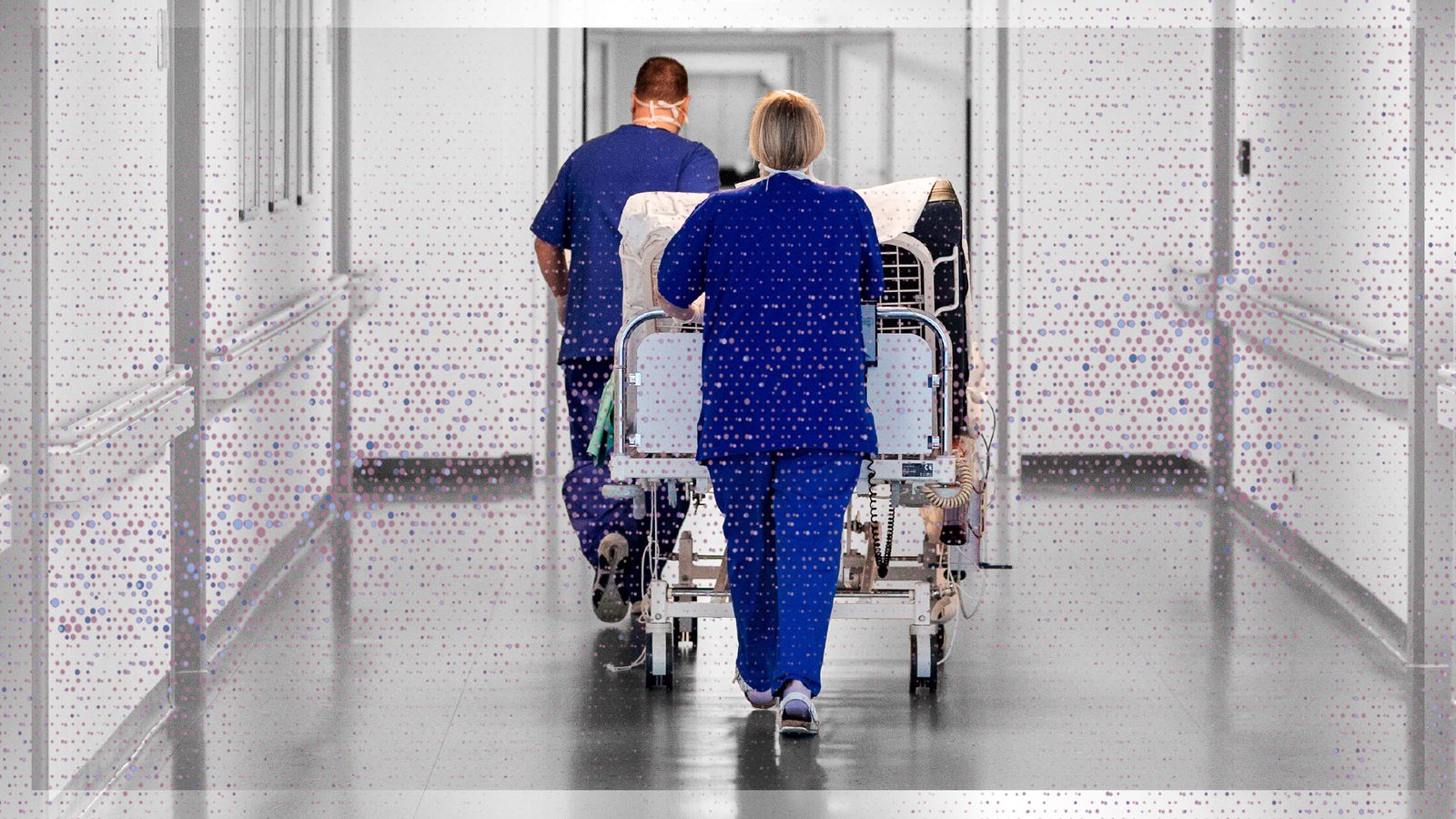A record number of patients are waiting to start routine hospital treatment, latest figures from NHS England show – and analysis by Sky News suggests the backlog of patients is far worse in some areas than others.
Leading the way is Birmingham and Solihull, which – as a proportion of its population – has a backlog that is more than two-and-a-half times that of the Vale of York.
In the Birmingham and Solihull Clinical Commissioning Group (CCG), 14,200 patients per 100,000 people were waiting to start treatment, compared to 5,287 patients per 100,000 in the Vale of York CCG.
You can compare these under-pressure areas with your own using the table below:
In Birmingham, elective operations at Queen Elizabeth Hospital were cancelled on some days in July due to a lack of space in intensive care, partly attributed to COVID-19.
Although less than a fifth of the peak earlier this year, there were more than 275 COVID-19 patients across two large hospital trusts in Birmingham as of 12 August.
Other CCG areas with the highest proportion of people waiting for treatment, such as Bury, Salford and Manchester, have also seen the largest number of COVID-19 patients in recent months.
It was revealed earlier that 5.5 million people were waiting to start treatment at the end of June across England.
Of those, a record 3.8 million patients were waiting for treatment within 18 weeks – an increase of 174,248 on the previous month.
There are signs of progress in reducing the backlog in patients waiting the longest.
The number of people waiting for more than a year to begin treatment has reduced by nearly a third since reaching a peak of more than 430,000 people in March.
At the end of June, 304,803 people were waiting for more than 52 weeks – down by 31,930 from the previous month.
Professor Stephen Powis, national medical director for NHS England, said the health service was taking care of the “highest ever number of patients” over the summer “to tackle the COVID backlog.”
NHS England also released statistics showing A&E attendances in July rose by 36.2% to 2,162,799 compared to the same month last year.
Emergency admissions were up 12.6% on July 2020, but 3.9% lower than July 2019.
It seems the rise in patients needing care is outpacing the reduction in the backlog, which could be why waiting lists are increasing overall.
The Institute for Fiscal Studies, an independent think-tank, has suggested this trend is likely to continue. It recently estimated the waiting list in England could to rise to 14 million by autumn next year.
The Data and Forensics team is a multi-skilled unit dedicated to providing transparent journalism from Sky News. We gather, analyse and visualise data to tell data-driven stories. We combine traditional reporting skills with advanced analysis of satellite images, social media and other open source information. Through multimedia storytelling we aim to better explain the world while also showing how our journalism is done.






















